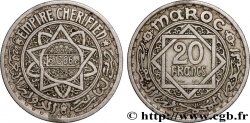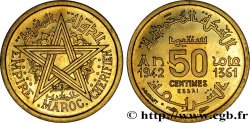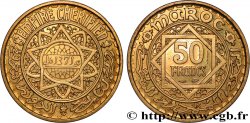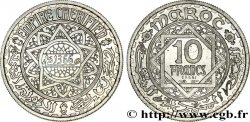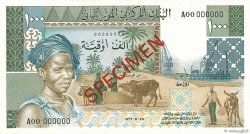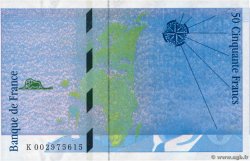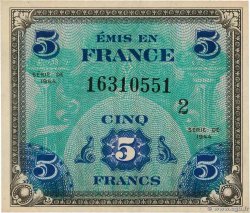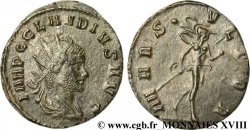Live auction - fco_694082 - MAROKKO - FRANZÖZISISCH PROTEKTORAT 5 Dirhams essai Cupro-Nickel Morlon AH 1349 n.d.
Sie müssen angeschlossen sein und von cgb.fr genehmigt werden, um in einer E-Auktion teilzunehmen.Melden Sie sich an, um zu wetten..Die Kontobestätigungen sind innerhalb von 48 Stunden nach Ihrer Anmeldung gemacht.Warten Sie nicht bis die letzten zwei Tage vor dem Abschluss eines Verkaufs, um Ihre Registrierung abzuschließen. Klickend "BIETEN" verpflichten Sie sich vertraglich, diesen Artikel zu kaufen und Sie nehmen ohne Reserve die allgemeinen Verkaufsbedingungen für den live auctions zu cgb.fr an.
Der Verkauf wird an der Zeit auf der Übersichtsseite angezeigt geschlossen werden. Angebote, die nach der Schließung Zeit empfangen sind, werden nicht gültig.
Bitte beachten Sie, dass die Fristen für die Einreichung Ihres Angebots auf unsere Server können variieren und es kann zur Ablehnung Ihres Angebots entstehen, wenn es in den letzten Sekunden des Verkaufs gesendet wird. Die Angebote sollen mit ganzer Zahl ausgeführt sein, Sie können Kommas oder des Punktes in Ihrem Angebot nicht erfassen. Bei Fragen klicken Sie hier, um einen Blick auf die FAQ Live-Auktionen.
Alle Gewinngebote unterliegen einem Aufschlag von 18 % für Verkaufskosten.
Alle Gewinngebote unterliegen einem Aufschlag von 18 % für Verkaufskosten.
| Schätzung : | 3 000 € |
| Preis : | 1 650 € |
| Höchstgebot : | 1 650 € |
| Verkaufsende : | 24 September 2024 18:54:05 |
| Bieter : | 2 Bieter |
Type : 5 Dirhams essai Cupro-Nickel Morlon AH 1349
Datum: n.d.
Prägemenge : -
Metall : Kupfer-Nickel
Durchmesser : 32,17 mm
Stempelstellung : 7 h.
Gewicht : 12,01 g.
Rand lisse
Slab

PCGS : SP65
Kommentare zum Erhaltungszustand:
Exemplaire sous coque PCGS SP65
N° im Nachschlagewerk :
Pedigree :
Cet exemplaire provient de la Collection Michel
Vorderseite
Titulatur der Vorderseite EN ARABE, AU CENTRE : DEMI-RIAL DE MOULAY YOUSSEF, LE NOBLE ; DANS LES CANTONS DE L’ÉTOILE : QU’IL SOIT ACCOMPAGNÉ PAR LA JOIE, LA CHANCE, L’AMOUR DE SON PEUPLE, LA GLOIRE, ET CE, POUR TOUJOURS.
Beschreibung Vorderseite Sceau de Salomon cerclé en son centre.
Rückseite
Titulatur der Rückseite REPVBLIQVE - FRANÇAISE.
Beschreibung Rückseite tête de Marianne à droite et signature Morlon.
Kommentare
Cette frappe est inédite en cupro-nickel.
Cet exemplaire, qui ne s’aimante pas, est manifestement en cupro-nickel. Il est donc dans un métal inédit au Lecompte.
Par ailleurs, Lecompte signale une frappe médaille. Il s’agit ici d’une très étrange frappe à 7h qui se rapproche donc plus d’une frappe monnaie.
Nous avons souvent inversé les illustrations du livre de Jean Lecompte avers/revers car le Maroc étant un protectorat, la puissance émettrice, théoriquement placée à l’avers, est le roi du Maroc et non la République française.
Pour cette pièce, qui ne mentionne pas de statut politique particulier ni n’utilise le système inspiré de celui des Français (qui n’apparaît qu’en 1339 A.H., on devrait certainement placer à l’avers le nom et les titres du roi. On notera que dans ce cas l’avers porte également la valeur faciale, le revers une autre expression de la valeur faciale, le lieu et l’année de frappe.
Malheureusement, entre les intentions des responsables marocains, l’exécution par la Monnaie de Paris (nous avons vu que l’auteur des coins ne connaissait pas la langue arabe) et les traditions locales éventuellement différentes, il est très difficile de trancher.
This strike is unprecedented in cupro-nickel.
This example, which does not magnetize, is clearly made of cupro-nickel.. He is therefore in an unpublished metal at Lecompte.
Furthermore, Lecompte reports a medal strike. This is a very strange strike at 7 o'clock which is therefore closer to a coin strike..
We have often reversed the illustrations in Jean Lecompte's book, obverse/reverse, because Morocco being a protectorate, the issuing power, theoretically placed on the obverse, is the King of Morocco and not the French Republic..
For this coin, which does not mention any particular political status nor does it use the system inspired by that of the French (which only appears in 1339 A. H. , the name and titles of the king should certainly be placed on the obverse. It should be noted that in this case the obverse also bears the face value, the reverse another expression of the face value, the place and year of minting.
Unfortunately, between the intentions of the Moroccan officials, the execution by the Paris Mint (we have seen that the author of the coins did not know the Arabic language) and the possibly different local traditions, it is very difficult to decide
Cet exemplaire, qui ne s’aimante pas, est manifestement en cupro-nickel. Il est donc dans un métal inédit au Lecompte.
Par ailleurs, Lecompte signale une frappe médaille. Il s’agit ici d’une très étrange frappe à 7h qui se rapproche donc plus d’une frappe monnaie.
Nous avons souvent inversé les illustrations du livre de Jean Lecompte avers/revers car le Maroc étant un protectorat, la puissance émettrice, théoriquement placée à l’avers, est le roi du Maroc et non la République française.
Pour cette pièce, qui ne mentionne pas de statut politique particulier ni n’utilise le système inspiré de celui des Français (qui n’apparaît qu’en 1339 A.H., on devrait certainement placer à l’avers le nom et les titres du roi. On notera que dans ce cas l’avers porte également la valeur faciale, le revers une autre expression de la valeur faciale, le lieu et l’année de frappe.
Malheureusement, entre les intentions des responsables marocains, l’exécution par la Monnaie de Paris (nous avons vu que l’auteur des coins ne connaissait pas la langue arabe) et les traditions locales éventuellement différentes, il est très difficile de trancher.
This strike is unprecedented in cupro-nickel.
This example, which does not magnetize, is clearly made of cupro-nickel.. He is therefore in an unpublished metal at Lecompte.
Furthermore, Lecompte reports a medal strike. This is a very strange strike at 7 o'clock which is therefore closer to a coin strike..
We have often reversed the illustrations in Jean Lecompte's book, obverse/reverse, because Morocco being a protectorate, the issuing power, theoretically placed on the obverse, is the King of Morocco and not the French Republic..
For this coin, which does not mention any particular political status nor does it use the system inspired by that of the French (which only appears in 1339 A. H. , the name and titles of the king should certainly be placed on the obverse. It should be noted that in this case the obverse also bears the face value, the reverse another expression of the face value, the place and year of minting.
Unfortunately, between the intentions of the Moroccan officials, the execution by the Paris Mint (we have seen that the author of the coins did not know the Arabic language) and the possibly different local traditions, it is very difficult to decide








 Berichten über einen Fehler
Berichten über einen Fehler Die Seite drucken
Die Seite drucken Teilen meiner Auswahl
Teilen meiner Auswahl Stellen Sie eine Frage
Stellen Sie eine Frage Einlieferung/Verkauf
Einlieferung/Verkauf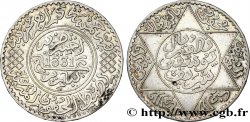
 Details
Details